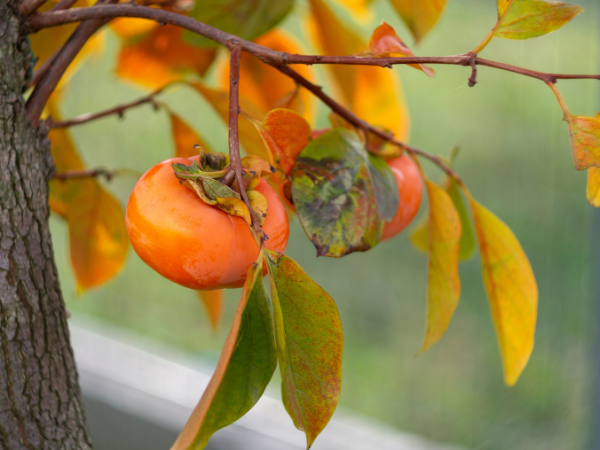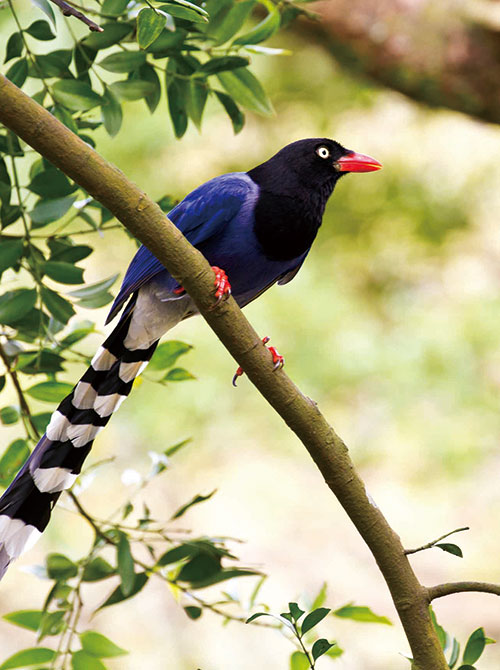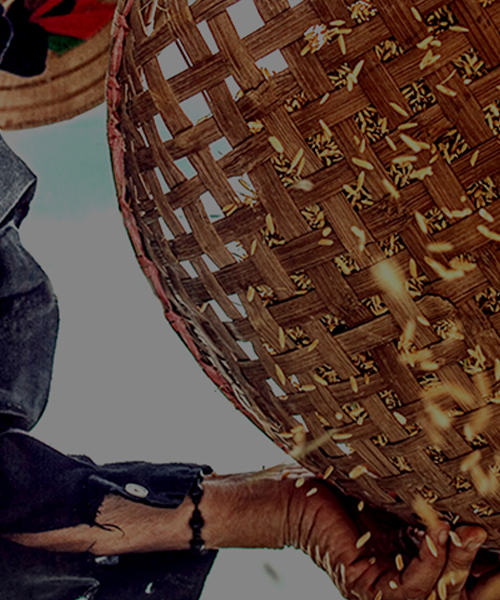Organic Persimmons Rich in Autumn
- 2023-08-15
- 2023-08-15
- / 1221 Views
- /

Organic Persimmons Rich in Autumn
Persimmons are native to mainland China and recorded in “Erya” and “Book of Rites (Li Chi)” more than 3,000 years ago. According to “Annal of Chuluo County”, persimmons were introduced to Taiwan by immigrants from the Qing Dynasty.
Persimmon is an arbor of ebony family. There are thousands of persimmon varieties in the world, but only Diospyros kaki persimmon is economically cultivated, and the variety of persimmons often eaten in Taiwan is Diospyros kaki persimmon. The persimmon tree does not have strict requirements on the terrain and soil. It can grow in mountains, flats, or beaches, but it is better to have a deep soil layer, well-drained soil, and maintain a considerable humidity.
Taiwan persimmons are divided into two types: astringent persimmons and sweet persimmons, according to whether the fruit can be naturally de-astringent on the tree. Persimmons such as Shibi, Bull Heart and Sichou are astringent persimmons, which need to be artificially de-astringent for consumption. The persimmons that are naturally de-astringent on the tree are divided into two types: complete persimmons and incomplete persimmons according to the degree of de-astringency. The rich persimmons, which account for 90% of the output, and the completely persimmons all belong to Jiro and Hanami. The pen persimmons that look like ink-filled persimmons belong to incomplete persimmons.
The harvest season is when the color of persimmons turns from green to yellow and then red. From September to November, the persimmon family turns red in sequence in different origins. In mid-August, the persimmons in Taichung are all around, and in mid-September, the persimmons in Hsinchu and Miaoli, which is also the raw material for making persimmon cakes, and the main producing area of Bull Heart persimmon in late September is Chiayi Fanlu. The sweet persimmons are mainly peaceful in Taichung, followed by Jiro persimmons in mid-October, Hanami in late October, and Fuyu persimmons in early November.

Organic persimmons need to overcome the weather test. It requires courage and wisdom of organic farmers to face persimmon trees. At a minimum, they do not use pesticides, fertilizers, and herbicides to maintain soil vitality. Organic persimmon farmers deploy their own liquid fertilizers to provide nutrients and use pheromone sticky boards in the face of insect pests. According to the growth situation, pruning and cutting leaves are used to increase the growth space to reduce diseases. Some organic farms put emphasis on grass cultivation to increase ecological diversity. Some farms are located in high-altitude mountains and forests. Organic farmers leave a few plants unpacked for squirrels, monkeys, and birds to enjoy sweet persimmons together.
The selection method of organic persimmons is preferably with uniform color, large fruit shape, plump fruit, clean fruit surface and bright green sepals. If the fruit is cracked or scratched by wind marks, the appearance will also affect the texture. Its specifications are usually expressed by weight, 5A is 250 grams, and usually persimmons are most popular with 6A to 8A specifications. There are also secrets to its preservation method. Persimmons are late-ripening fruits, and they are usually harvested in advance according to the transportation time. If the persimmons are not yet ripe, it is recommended to put them with ethylene-containing bananas or apples to ripen them. After confirming that they are ripe, use white paper and store in a plastic bag and refrigerate for up to three days. Persimmons are delicious whether they are crunchy or soft, depending on personal taste.
Persimmons are delicious and juicy, rich in dietary fiber, vitamin C, carotene and potassium, and persimmon juice can relieve hangovers; the white persimmon cream on the persimmon cake can cure cough, while the dried persimmon leaves can improve immunity, and if brewed into vinegar or wine has its own flavor, so there is a saying that “when the persimmon turns red, the doctor’s face turns green”. However, there are a few points to pay attention to when eating persimmons. First of all, do not eat on an empty stomach as it is easy to produce stomach acid, and because it contains tannins, it cannot be eaten with shrimp, crab and seafood, and persimmon is a snack with concentrated sugar, and it needs to be ingested appropriately.
From fresh food, Chinese herbal medicines to processed products and persimmon dyeing cultural creations, and also because of the homonym of persimmons, they really live up to the reputation of “fairy fruit”.




